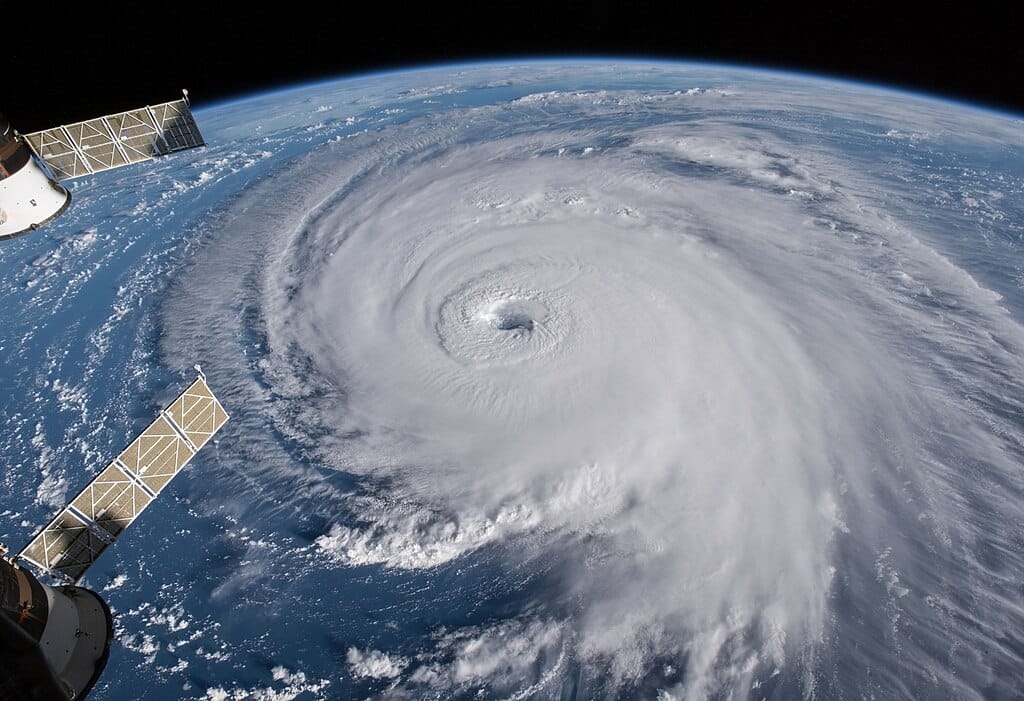cyclone

Cyclone, a noun meaning a windstorm that revolves around a center of low pressure, has a somewhat interesting etymology in that it is a modern coinage using ancient roots. It is also one of those rare words that we can pinpoint its precise origin, a situation somewhat more common with scientific and technical terms.
Cyclone was coined in 1848 by Henry Piddington (1797–1858, an English ship captain turned scientist who had settled in India. Piddington is best known for his study of meteorology. In his Sailor’s Horn-book of that year, Piddington wrote:
CLASS II.
Circular (or highly curved) winds.
Hurricane Storms. Some gales of high latitudes (?)
Whirlwinds—of wind, rain, dust, &c.—called in Spanish, French, Portuguese, &c. Turbo, Turbonado, Tourbillion, Tourmente.
African Tornado, (sometimes?)
Water spouts.
Bursting of Spouts water spouts, &c.
Samiel.
Simoom.
I am not altogether averse to new names, but I well know how sailors, and indeed many landsmen; dislike them; I suggest, however, that we might perhaps for all this last class, of circular or highly curved winds, adopt the term “Cyclone” from the Greek Κυκλως (which signifies amongst other things the coil of a snake) as neither affirming the circle to be a true one, though the circuit may be complete, yet expressing sufficiently the tendency to circular motion in these meteors. We should by the use of it be able to speak without confounding names which may express either straight or circular winds—such as “gale, storm, hurricane,” &c.—with those which are more frequently used (as hurricane) to designate merely their strength. This is what leads to confusion, for we say of, and we the authors ourselves write about, ships and places in the same “storm” having “the storm” commencing—"the gale increasing”—"the hurricane passing over”—and the like; merely because the ships or localities of which we speak had the wind of different degrees of strength, though the whole were experiencing parts of the same circular storm. Cycloidal is a known word, but it expresses relation to a defined geometrical curve and one not approaching our usual views, which are those of something nearly, though not perfectly, circular. Now if we used a single word and said The “Cyclone” commenced, increased, passed over, &c. we shall get rid of all this ambiguity, and use the same word to express the same thing in all cases.
Piddington makes an error with his Greek. Κυκλως (kuklos) means circle, not the “coil of a snake.” It the snake metaphor is what he had in mind, the Greek would be κύκλωμα (kukloma). Some nineteenth-century writers with better knowledge of Greek spelled the word cyclome.
While the term is used in a general sense for all circular storms, regardless of wind strength or size, it can also be used more specifically to refer to smaller circular storms, such as tornados. And, in fact, in the United States cyclone has often been used to mean tornado.
Of course, for New Yorkers cyclone has a very different association. It is the name of the famous Coney Island roller coaster that opened in 1927.

Sources:
Oxford English Dictionary Online, 1893, s.v. cyclone, n.
Piddington, Henry. The Sailor’s Horn-Book for the Law of Storms. New York: John Wiley, 1848, 8. HathiTrust Digital Library.
Photo credit: NASA, 2018. Wikimedia Commons. Public domain image.